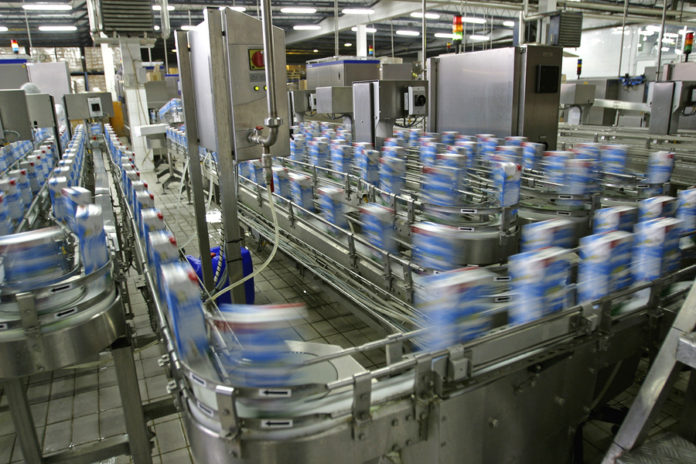
By Tanya Viner, co-chair of Buchalter’s Mergers & Acquisitions Practice and the Los Angeles chair of the Corporate Practice Group, and Jeremy Weitz, chair of Buchalter’s Corporate Practice Group and co-chair of the firm’s Mergers & Acquisitions Practice
Key takeaways:
-
Prepare for regulatory and brand scrutiny: Ensure all compliance, food safety, labeling, and licensing requirements are up to date, and protect intellectual property (trademarks, recipes, digital assets) to maximize buyer trust and valuation.
-
Stabilize operations and finances: Strengthen supply chain agreements, maintain clean audited financials, highlight unit economics and growth metrics, and manage inventory effectively to demonstrate scalability and profitability.
-
Secure people and transition plans: Put retention strategies, employee contracts, and succession planning in place to reduce buyer concerns about talent loss and ensure the business can thrive beyond the owner’s departure.
For many food and beverage entrepreneurs, the business is far more than a source of income — it’s a labor of love. It represents years of long hours, bold creativity, and relentless passion poured into crafting products and experiences that people crave. Whether it’s a specialty coffee roaster, a beloved family-owned restaurant group, or a fast-growing packaged goods brand, deciding to sell or exit the business marks one of the most pivotal milestones in an owner’s journey.
Undergoing a sale of a business is never straightforward. Food and beverage companies face unique challenges that go beyond what other industries encounter. Consumer tastes shift quickly, margins are tight and compliance issues are complex. To maximize value and ensure a smooth, successful transition, it’s critical to address the following five key issues before beginning the sale process.
Regulatory and compliance readiness
Few industries are as heavily regulated as food and beverage. From health and safety rules to labeling requirements, compliance lapses can create enormous liabilities that reduce a company’s valuation — or even derail a sale altogether.
Key considerations include:
- Food safety compliance: Are HACCP (Hazard Analysis Critical Control Point) plans, FDA/USDA inspections, and state or local health permits up to date? Buyers will review inspection histories carefully.
- Labeling and marketing claims: Nutrition facts, allergen disclosures, and claims such as “organic,” “non-GMO,” or “sustainably sourced” must meet strict regulatory standards. Any history of mislabeling or false claims can lower trust and valuation.
- Licensing: For businesses that distribute alcohol, liquor licenses must be properly maintained and transferable — a frequent sticking point in deals.
Buyers do not want to inherit regulatory headaches. Demonstrating a clean compliance record reassures acquirers that they are purchasing a business with limited legal or reputational risks. Addressing compliance gaps early also avoids last-minute delays during due diligence.
Brand protection and intellectual property
In the food and beverage industry, the brand often is the business. Consumers form deep loyalties to names, packaging, logos, and signature recipes. But without proper protection, that brand equity — the very asset driving your company’s value — can erode quickly and leave money on the table when it matters most. Steps to take before a sale:
- Trademarks and copyrights: Ensure that brand names, logos, slogans, and packaging designs are trademarked and registered. Copyright protections should extend to marketing materials and unique packaging artwork.
- Trade secrets: Recipes, formulas, or proprietary processes should be documented as confidential intellectual property. Clear agreements with employees and contractors documenting assignment of inventions and intellectual property help prevent disputes over ownership. Think about whether you have ensured that any of your co-development agreements contain clear guidelines on who owns the underlying intellectual property and any new developments.
- Domain names and social media handles: These digital assets are increasingly valuable. They should be legally owned by the company (not an individual founder) and included in the transfer.
Buyers pay premiums for strong, defensible brands. Any ambiguity over ownership of recipes, branding or online assets can undermine value or stall negotiations. Protecting intellectual property early signals professionalism and long-term foresight.
Supply chain stability and contracts
A food and beverage business is only as strong as its supply chain. Buyers want confidence that operations will continue seamlessly after the sale. Having key supplier and distribution agreements carefully reviewed by counsel before going to market is critical, as buyers will scrutinize these contracts and focus closely on the terms that impact continuity and value. Areas of focus include:
- Vendor and distributor agreements: Ensure contracts are up to date, transferable, and legally binding. Long-term agreements with key suppliers and distributors strengthen buyer confidence.
- Ingredient sourcing: Highlight strong relationships with suppliers, particularly for specialty or scarce ingredients. Demonstrating diverse sourcing reduces the perceived risk of disruption.
- Co-manufacturing arrangements: If production is outsourced, contracts should clearly define quality control, exclusivity, minimum purchase commitments, long term fixed pricing, ownership of intellectual property, and termination provisions.
In an industry where consumer demand can spike overnight (think plant-based alternatives or functional beverages), buyers are acutely sensitive to supply chain risks. A stable, well-documented supply chain enhances perceived reliability and purchase price.
Financial transparency and performance metrics
Financials are the backbone of any transaction, but in food and beverage, certain metrics carry outsized importance. Thin margins and variable costs mean that buyers will scrutinize the numbers in detail.
Preparation should include:
- Clean financial statements: Ideally reviewed or audited by an accounting firm. Statements should clearly separate personal expenses, one-time costs, or non-core revenue.
- Unit economics: Buyers want to see margins by product, channel, or location. Are grocery sales more profitable than direct-to-consumer? Does one location outperform others?
- Growth drivers: Track and highlight metrics such as same-store sales, customer acquisition costs, repeat purchase rates, and wholesale expansion. These numbers provide insight into scalability.
- Inventory management: Excess or obsolete inventory can drag down valuation. Accurate tracking and turnover rates are critical.
- Maximize value: Work with an experienced professional to discuss changes to business and operations that can help maximize value such as, identifying certain EBITDA add-backs, and reducing unnecessary expenses.
In food and beverage, financial health is often measured by consistency and scalability. Demonstrating that the business has predictable cash flow and room for growth is one of the most effective ways to maximize valuation.
Talent, culture, and transition planning
Behind every food and beverage brand are the people who make it work. Buyers want assurance that key employees — from chefs and product developers to sales managers and operations leads — will remain after the owner exits.
Owners should focus on:
- Employment agreements: Ensure that key employees have contracts in place, including non-compete or confidentiality clauses where enforceable.
- Incentive equity: A well planned incentive equity plan can be a tax efficient method to motivate key employees and align their interests with an owner.
- Retention strategies: Consider incentives such as “stay bonuses” or equity rollovers to encourage continuity during and after the sale.
- Succession planning: Identify who will take over day-to-day operations. If the owner has been the “face” of the brand, put systems in place to ensure the business can thrive without them.
- Culture documentation: Buyers increasingly value businesses with strong cultures that support retention, customer service, and compliance. A codified set of values and policies adds credibility.
Many deals fall apart because buyers fear a “brain drain” once the founder leaves. A well-prepared team not only ensures continuity but can also command a higher price by reducing integration risks.
Exiting a food and beverage business is not just about putting it on the market — it’s about presenting it as a well-prepared, compliant, and scalable company that a buyer can confidently take to the next level. By addressing these five areas — regulatory compliance, brand protection, supply chain stability, financial transparency, and talent retention — owners can significantly increase both the likelihood of closing a deal and the value they receive.
The food and beverage industry is competitive and fast-moving. With foresight and planning, entrepreneurs can turn years of hard work into a successful, lucrative exit — and leave the business positioned for continued growth long after their departure. Preparation and working closely with experienced M&A legal counsel can help an owner be prepared for an eventual sale and maximize the value of the business.
 Tanya Viner is co-chair of Buchalter’s Mergers & Acquisitions Practice and the Los Angeles chair of the Corporate Practice Group. Her practice focuses on mergers and acquisitions, representing both the buyer and seller in large complex transactions ranging from the sale of closely-held family businesses to transactions in excess of a billion dollars.
Tanya Viner is co-chair of Buchalter’s Mergers & Acquisitions Practice and the Los Angeles chair of the Corporate Practice Group. Her practice focuses on mergers and acquisitions, representing both the buyer and seller in large complex transactions ranging from the sale of closely-held family businesses to transactions in excess of a billion dollars.
In addition to her mergers and acquisitions practice, Ms. Viner provides day-to-day counseling on a broad range of transactional and governance matters advising emerging growth companies on formation, venture capital financing, licensing, and employment issues, often acting as outside general counsel, and trusted advisor throughout every aspect of growth.
 Jeremy Weitz is chair of Buchalter’s Corporate Practice Group and co-chair of the Firm’s Mergers & Acquisitions Practice. His expertise covers mergers and acquisitions, private equity, publicly and privately traded securities, venture capital, corporate maintenance and formation, corporate finance, and licensing.
Jeremy Weitz is chair of Buchalter’s Corporate Practice Group and co-chair of the Firm’s Mergers & Acquisitions Practice. His expertise covers mergers and acquisitions, private equity, publicly and privately traded securities, venture capital, corporate maintenance and formation, corporate finance, and licensing.
Mr. Weitz represents clients in a variety of industries, including food and beverage, retail, e-commerce, manufacturing, beauty, fitness, and technology that range in size from small start-ups to multi-billion dollar publicly traded corporations. His mergers and acquisitions practice is focused on the middle market with transaction values ranging between $10 million up to $3 billion.
Credit: Source link













